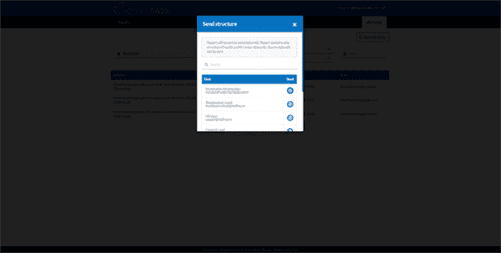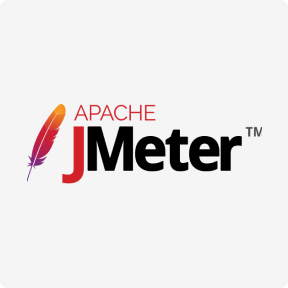Concluir uma graduação é uma conquista importante, mas, em um mercado de trabalho cada vez mais competitivo, apenas o diploma já não é suficiente para garantir destaque. O que diferencia muitos profissionais hoje é a capacidade de investir em aprendizado contínuo.
Ao longo deste artigo, vamos explorar como os cursos complementares podem agregar valor ao diploma, quais são os mais indicados para quem busca especialização, como eles influenciam nas chances de promoção e, por fim, apresentar 11 cursos que podem ser feitos para complementar uma graduação.
Quais cursos agregam valor ao diploma universitário?
Os cursos que realmente somam ao diploma são aqueles que ampliam o conhecimento prático e ajudam o profissional a se conectar com as demandas atuais do mercado. Isso pode variar de acordo com a área de formação, mas algumas opções costumam ser valorizadas em diferentes segmentos.
Cursos online de idiomas, por exemplo, são vistos como fundamentais, especialmente o inglês. Da mesma forma, cursos de gestão de projetos, liderança, comunicação e tecnologia podem ser diferenciais em praticamente qualquer profissão.
Além disso, em setores em constante transformação, como o de tecnologia e marketing, cursos que envolvem inovação, análise de dados e ferramentas digitais são extremamente estratégicos.
Cursos extracurriculares aumentam as chances de promoção?
Sim, cursos extracurriculares podem aumentar significativamente as chances de promoção. Eles demonstram iniciativa, comprometimento com o desenvolvimento profissional e capacidade de se adaptar às mudanças do mercado.
Ao investir em formações além da graduação, você mostra que está disposto a ir além do básico, o que é altamente valorizado por gestores e líderes. Além disso, cursos extracurriculares ajudam a desenvolver habilidades técnicas e comportamentais que muitas vezes não são abordadas na formação tradicional.
Por exemplo, aprender sobre liderança, comunicação eficaz, gestão de tempo ou ferramentas digitais pode te tornar mais preparado para assumir cargos de maior responsabilidade. Em ambientes competitivos, quem se atualiza constantemente sai na frente.
Cursos que podem ser feitos para complementar uma graduação
Investir em cursos complementares é uma excelente forma de ampliar horizontes profissionais, desenvolver novas habilidades e se destacar no mercado de trabalho. Para quem deseja investir em capacitação e se destacar na carreira, estes são alguns cursos que podem fazer toda a diferença:
1. Gestão de Projetos
Esse curso ensina a planejar, executar e controlar projetos de forma eficiente. É ideal para profissionais que desejam liderar equipes e entregar resultados dentro de prazos e orçamentos.
2. Marketing Digital
Com o crescimento das redes sociais e do e-commerce, o marketing digital se tornou essencial. O curso aborda estratégias de conteúdo, SEO, mídia paga e análise de dados. É um ótimo complemento para áreas como Publicidade, Jornalismo, Design e Administração.
3. Finanças Corporativas
Esse curso aprofunda o conhecimento sobre gestão financeira, investimentos e análise de riscos. É indicado para quem quer atuar em cargos estratégicos ou empreender com segurança. Complementa bem graduações em Economia, Contabilidade e Administração.
4. UX/UI Design
Focado na experiência e na interface do usuário, esse curso é muito procurado por empresas de tecnologia. Ensina a criar produtos digitais intuitivos e agradáveis. É excelente para quem cursa Design, TI, Engenharia ou Comunicação.
5. Programação
Aprender a programar é uma habilidade valiosa em praticamente qualquer área. O curso pode ser feito por iniciantes e oferece base em linguagens como Python, JavaScript ou Java. Complementa formações em Engenharia, Matemática, Física e até áreas da saúde.
6. Inglês para Negócios
Dominar o inglês técnico e corporativo abre portas em empresas multinacionais e no mercado global. O curso foca em vocabulário, negociação, apresentações e escrita profissional.
7. Inteligência Emocional
Esse curso ajuda a desenvolver habilidades interpessoais, controle emocional e empatia. É muito valorizado em ambientes corporativos e de liderança. Complementa graduações como Psicologia, Pedagogia, Recursos Humanos e Gestão.
8. Empreendedorismo
Ideal para quem deseja abrir seu próprio negócio ou inovar dentro de empresas. O curso aborda plano de negócios, validação de ideias, finanças e marketing. Serve como complemento para qualquer graduação, especialmente Administração, Economia e Comunicação.
9. Análise de Dados
Com o crescimento do uso de dados nas decisões empresariais, esse curso se tornou estratégico. Ensina ferramentas como Excel, Power BI e SQL, além de conceitos estatísticos. É um ótimo complemento para áreas como TI, Engenharia, Economia e Saúde.
10. Direito Digital
Esse curso aborda temas como proteção de dados, crimes virtuais e legislação aplicada à tecnologia. É essencial para profissionais que atuam com internet, software ou e-commerce. Complementa graduações em Direito, TI, Administração e Comunicação.
11. Educação Financeira
Ajuda a entender melhor o uso do dinheiro, investimentos e planejamento pessoal. É útil tanto para a vida profissional quanto pessoal. Complementa qualquer graduação, especialmente para quem deseja mais autonomia financeira ou atuar como educador.
Como escolher cursos que fortaleçam seu currículo?
Escolher cursos que fortaleçam seu currículo exige uma análise cuidadosa dos seus objetivos profissionais, das tendências do mercado e das habilidades que você já possui. O primeiro passo é entender claramente onde você quer chegar: se pretende crescer na empresa atual, mudar de área, empreender ou se especializar em um nicho específico.
Com esse foco definido, fica mais fácil identificar quais competências precisam ser desenvolvidas. É importante priorizar cursos com aplicação prática, que ofereçam projetos, estudos de caso ou certificações reconhecidas, pois eles demonstram que você sabe aplicar o conhecimento no dia a dia profissional.
Além disso, buscar habilidades complementares à sua formação original pode abrir novas portas — por exemplo, um profissional de Administração que aprende Análise de Dados ou UX Design se torna mais versátil e competitivo.
Conclusão
Em um mundo profissional tão competitivo, investir em cursos online complementares é uma das formas mais inteligentes de valorizar o diploma universitário. Além de enriquecer o currículo, eles ajudam a desenvolver competências práticas, aumentam a empregabilidade e podem acelerar o crescimento na carreira.
Se você conhece alguém que está terminando a graduação ou busca maneiras de se destacar no mercado, compartilhe este artigo. Ele pode ser o incentivo que faltava para que outra pessoa invista no aprendizado contínuo e conquiste novas oportunidades.

 Negócios4 dias ago
Negócios4 dias ago
 Geral6 dias ago
Geral6 dias ago
 Negócios5 dias ago
Negócios5 dias ago
 Negócios6 dias ago
Negócios6 dias ago
 Saúde4 dias ago
Saúde4 dias ago
 Tecnologia4 dias ago
Tecnologia4 dias ago
 Negócios4 dias ago
Negócios4 dias ago
 Business6 dias ago
Business6 dias ago













